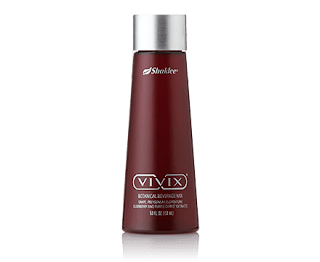How We Age: from DNA damage to cellular miscommunication, aging is a mysterious and multifarious process
DNA repair processes are highly associated with symptoms of aging. In fact, disorders that cause premature aging are typically caused by mutations in genes involved in the maintenance of our DNA.
While diverse strategies — from caloric restriction to genetic manipulation — have proven to extend life span in model organisms in the lab, these animals are not necessarily enjoying longer periods of health
GENOME: Damage control: most of the time, DNA repair mechanisms fix the damage, but errors slip through and accumulate as an organism ages. Aging has also been linked to the deterioration of DNA repair machinery, allowing permanent errors to become more common in older organisms.
EPIGENETIC: epigenetic changes are known to contribute to cancer, and there is intriguing evidence from animal models that changes to histone modifications do affect aging. These changes happen through mistakes during the processes of replication or DNA damage repair. During replication, DNA methylation and histone modifications are not always perfectly reproduced. When DNA is damaged , repair proteins must often remove epigenetic marks to access the damaged genetic material and repair it. Epigenetic marks can then be omitted or replaced incorrectly.
TELOMERE TROUBLES: telomere damage has clear effects on aging. In humans, mutated telomerase is associated with disorders involving organ dysfunction and elevated cancer risk
CELL FUNCTIONS:
PROTEINS: life depends on proper protein function. And proper protein function is all about proper protein folding. Misshapen proteins are often rendered useless and can clump together with other misfolded proteins inside cells. It is not yet clear whether protein misfolding leads to aging, but it appears that it is an almost inevitable physiological reality that the two coincide.
Problems with protein folding might be central to the multitude of molecular deficiencies that characterize an aging body. After all, normal protein folding is necessary for gene expression, enzyme function, and a host of other crucial physiological events.
GOLDILOCKS ORGANELLE: mitochondria’s role in aging is likely not limited to reactive oxygen species (ROS) or even DNA damage. Given the organelles’ broad-reaching involvement in _metabolism, inflammation, and epigenetic regulation of nuclear DNA, it is a central integrators of many of the pathways we’ve implicated in aging.
STEM CELLS: healthy adults produce about 200 billion new red blood cells each day to replace the same number removed from circulation every 24 hours. But the rate of blood-cell production declines with age. For this and other reasons, around 10% of people age 65 and older are anemic. Scientists are now homing in on how hematopoietic stem cells (HSCs) and other stem-cell populations show reduced regenerative capacity with age
Researchers have also linked epigenetic alterations, such as locus-specific changes in DNA methylation, to the reduced regenerative capacity of stem cells with age.
Exactly why and how stem cells slow down with age is still a mystery
DNA repair processes are highly associated with symptoms of aging. In fact, disorders that cause premature aging are typically caused by mutations in genes involved in the maintenance of our DNA.
While diverse strategies — from caloric restriction to genetic manipulation — have proven to extend life span in model organisms in the lab, these animals are not necessarily enjoying longer periods of health
GENOME: Damage control: most of the time, DNA repair mechanisms fix the damage, but errors slip through and accumulate as an organism ages. Aging has also been linked to the deterioration of DNA repair machinery, allowing permanent errors to become more common in older organisms.
EPIGENETIC: epigenetic changes are known to contribute to cancer, and there is intriguing evidence from animal models that changes to histone modifications do affect aging. These changes happen through mistakes during the processes of replication or DNA damage repair. During replication, DNA methylation and histone modifications are not always perfectly reproduced. When DNA is damaged , repair proteins must often remove epigenetic marks to access the damaged genetic material and repair it. Epigenetic marks can then be omitted or replaced incorrectly.
TELOMERE TROUBLES: telomere damage has clear effects on aging. In humans, mutated telomerase is associated with disorders involving organ dysfunction and elevated cancer risk
CELL FUNCTIONS:
PROTEINS: life depends on proper protein function. And proper protein function is all about proper protein folding. Misshapen proteins are often rendered useless and can clump together with other misfolded proteins inside cells. It is not yet clear whether protein misfolding leads to aging, but it appears that it is an almost inevitable physiological reality that the two coincide.
Problems with protein folding might be central to the multitude of molecular deficiencies that characterize an aging body. After all, normal protein folding is necessary for gene expression, enzyme function, and a host of other crucial physiological events.
GOLDILOCKS ORGANELLE: mitochondria’s role in aging is likely not limited to reactive oxygen species (ROS) or even DNA damage. Given the organelles’ broad-reaching involvement in _metabolism, inflammation, and epigenetic regulation of nuclear DNA, it is a central integrators of many of the pathways we’ve implicated in aging.
STEM CELLS: healthy adults produce about 200 billion new red blood cells each day to replace the same number removed from circulation every 24 hours. But the rate of blood-cell production declines with age. For this and other reasons, around 10% of people age 65 and older are anemic. Scientists are now homing in on how hematopoietic stem cells (HSCs) and other stem-cell populations show reduced regenerative capacity with age
Researchers have also linked epigenetic alterations, such as locus-specific changes in DNA methylation, to the reduced regenerative capacity of stem cells with age.
Exactly why and how stem cells slow down with age is still a mystery
INTER CELLAR COMMUNICATIONS: stem cells and other cells that undergo damage and decline do not age in isolation. But the cells do more than just die. They do negative things, and they persist
For example, growth differentiation factor 11 (GDF11), which controls the gene expression patterns that set up front-to-back orientation in mammalian embryos and measurably decreases with age
Other scientists are focusing on the transcription factor NF-κB, a central activator of inflammation, as a driver of aging. Over activation of NF-κB may cause senescent cells to release cytokines that stimulate inflammation and lead to further degeneration, even in far-flung parts of the body. Inhibiting NF-κB can stave off cell senescence in mice that age prematurely due to DNA repair defects
Information and Image credit: the-scientist.com/?articles.view/articleNo/42280/title/How-We-Age
Suplemen untuk melambatkan penuaan?
Vivix™ Minuman campuran botani merupakan revolusi terbaru di dalam pemakanan polifenol. Vivix ™ mengandungi campuran unik botani Polygonum Cuspidatum, Anggur Muscadine, Elderberi Eropah dan Lobak Ungu yang kaya dengan polifenol. Polifenol adalah kumpulan fitokimia yang terdiri daripada sebatian tanaman yang mengandungi khasiat antioksidan dan sel anti-penuaan semulajadi. Bahan-bahan utamanya telah diuji secara klinikal dan ianya eksklusif untuk Shaklee.
Secara ringkasnya, Vivix bagus untuk memperbaiki sel, menghapuskan radikal bebas dan memperbaiki DNA. Kenapa DNA? Kerana hampir setiap hari tubuh kita mengalami kerosakan DNA akibat radikal bebas.
1.Muscadine Grape - Mempunyai ciri-ciri menghentikan kimia penyebab kanser, ANTI VIRUS dan anti-bakteria
2.Purple Carrot - Mengurangkan risiko penyakit koronari jantung
3.Elderberry (Sambucus Niagra) - Mampu memberi perlindungan terhadap penyakit kardiovaskular dan jantung,mengurangkan stress, memperbaiki penglihatan dan penghadaman
4.Polygonum Cuspidatum - Melambatkan proses penuaan,merendahkan kolestrol, merendahkan tekanan darah ,mengurangkan berat badan
pada umur 70 tahun, beliau mencuba vivix untuk kesihatan..dah hasilnya..boleh menangis tengok tau..dari wajah yang kusam, berkedut, kulit berjeragat (well, what do you expect, she’s 70!) boleh berubah menjadi tegang, kemerahan, lebih anjal, segar, kedutan berkurang, perubahan 180 darjah!! kelihatan jauh lebih muda dari usia.
makcik ni mula mengamalkan shaklee pada usia 50-an! tiada istilah lambat kan? tengoklah pada usia 90-an, beliau kelihatan jauh lebih muda dan lebih sihat!
Nak menikmati discount 20-30% harga produk? Semestinya boleh. Dengan register ahli Shaklee. Hanya RM 79.00 pendaftaran sekali untuk seumur hidup
Perlukan Rundingan / Ingin memesan Product Shaklee dari sumber SEMULAJADI, Saya perunding bertauliah anda
Pengedar Shaklee Bertauliah
|Shaklee ID - 869539|
umi.nazrah@gmail.com
SMS/Whatsapp: 019-4320059
Instagram : kulit_cantik_sihat_semulajadi
Instagram : kulit_cantik_sihat_semulajadi
PM kami di
* These statements have not been evaluated by the Food and Drug Administration. These products are not intended to diagnose, treat, cure, or prevent any disease.
Penafian: Segala testimoni /penulisan tentang produk yg dikongsi di laman ini bukan bertujuan utk merawat, mencegah, mendiagnose atau menyembuhkan apa jua penyakit.






















0 comments:
Catat Ulasan